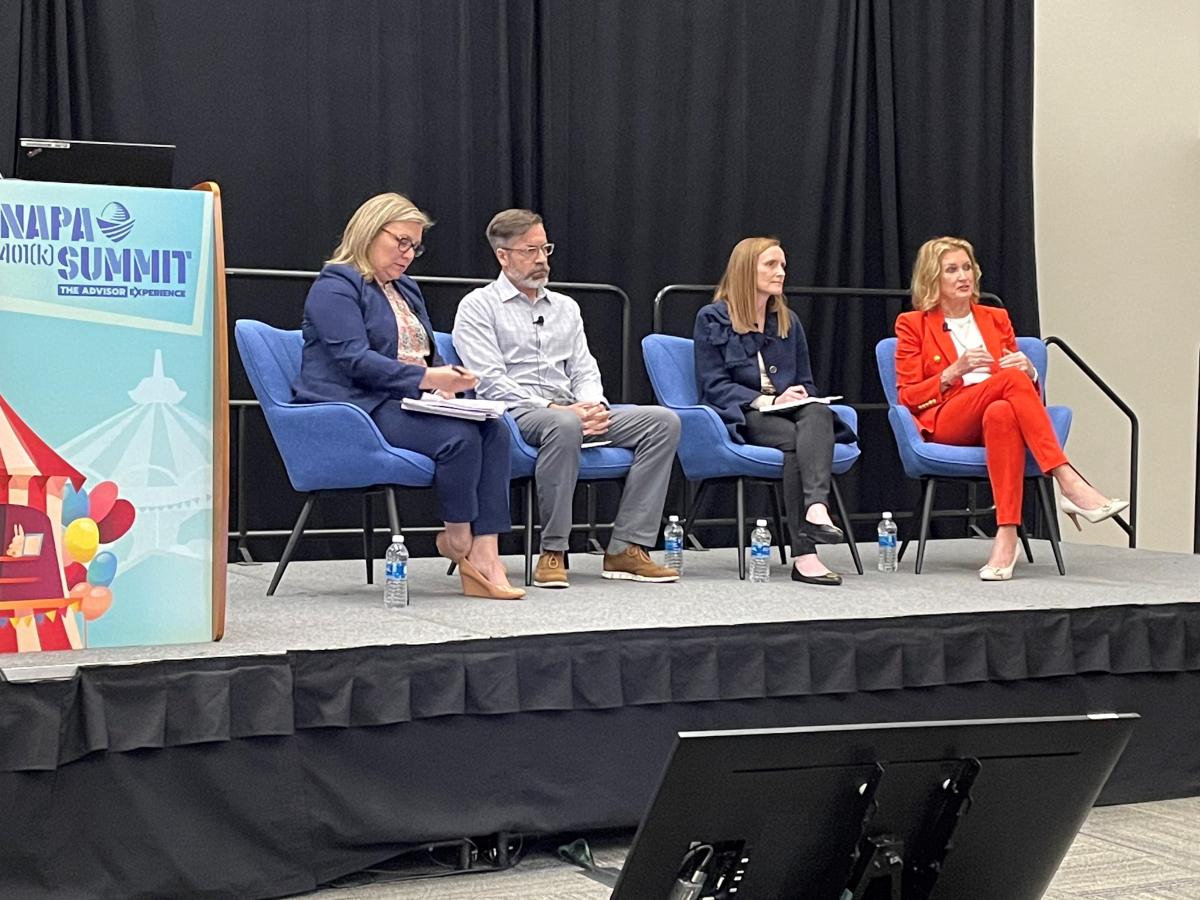The idea of providing a predictable paycheck in retirement seems to have everything going for it—participants supposedly want it, providers are creating solutions and frameworks exist, but there’s yet to be widespread adoption of providing a solution to plan participants.
 In fact, numerous studies suggest that plan participants would prefer that their employer’s retirement plan had an option to help generate income in retirement and that plan sponsors agree that participants need in-plan income options. So what needs to happen to reach a tipping point?
In fact, numerous studies suggest that plan participants would prefer that their employer’s retirement plan had an option to help generate income in retirement and that plan sponsors agree that participants need in-plan income options. So what needs to happen to reach a tipping point?
In an April 3 workshop session at the 2023 NAPA 401(k) Summit, Barbara Delaney, Principal at SS/RBA, a division of HUB International; Amelia Dunlap, Vice President of Marketing for Nationwide Retirement Solutions; Mike Sanders, Principal at CAPTRUST; and Bonnie Treichel, Chief Solutions Officer at Endeavor Retirement shared their thoughts on the prospects for solutions and what advisors should consider. Here are some of the points raised during the panel discussion.
QDIA Adoption
When asked by Dunlap, who served as moderator, whether retirement income solutions should be part of the qualified default investment alternative (QDIA), “The short answer is yes,” according to Treichel, who is assisting the American Retirement Association with developing a Retirement Income Certificate program. Treichel adds, however, that that’s not to say a plan sponsor should do that, as there are many factors and decisions involved in doing so, particularly involving which type of solution to offer, as well as associated fees and expenses. They also should want to do it for their plan participants.
Education and Engagement
For Delaney, she suggests that one of the things still lacking is getting participants engaged in the process. “It shouldn’t be all about the product; we definitely have an education problem,” she observed, adding that retirement is a process and that we can’t expect people to know how to plan. To reach a tipping point, Delaney believes that solutions must be scaled and that involves managed accounts, allowing a more holistic view of household assets and expenses.
“It’s a lot of work to set up, so you’ll want to make sure you get the maximum impact,” added Sanders. One idea for advisors, he noted, is to identify plans that would be suitable and consider putting in a few now as the defaults with the option to turn off the lifetime income part. Sanders noted that he likes the option to have it as a custom target date with the option to buy into the guarantee and dial it up or down—in essence, a parallel between income solutions and managed accounts.
That said, he emphasized you’ll want to conduct robust due diligence as part of the RFP process to see if it makes sense and have it documented that the plan is exploring retirement income solutions. The CAPTRUST executive added that he believes the process is not all that different than putting in a target date fund from 15 years ago, when there was still a lot of confusion surrounding the products.
Indeed, part of the complexity in considering options is talking to plan sponsors, Delaney adds. “We’re still in the battle of what’s the right solution for the participant.” On a personal level, she would prefer to still help participants make decisions about retiring, adding that with guarantees, you don’t have the problem of an upside-down market for those whose savings have been it.
As to scaling, Treichel believes some resources are coming together pretty quickly to help advisors scale the process. “I do think we’ll get there, considering the push coming from legislators and regulators who want us to have these solutions. Industry collaboration also suggests we’ll get there,” she noted.
Sanders equated the situation to electric car adoption, noting that the industry is starting to get good products, but we still can’t get them everywhere. Delaney similarly added that she believes the industry will get there because of the current demographics and many people retiring.
When asked by Dunlap what they would do to get started, Treichel suggested that step 1 is to get educated and step 2 is to have conversations with plan sponsors.
Delany further suggested that advisors should bring lots of data on particular participant populations. For example, if a plan has an older population, the advisor can ask the sponsor what they are doing with this group.

